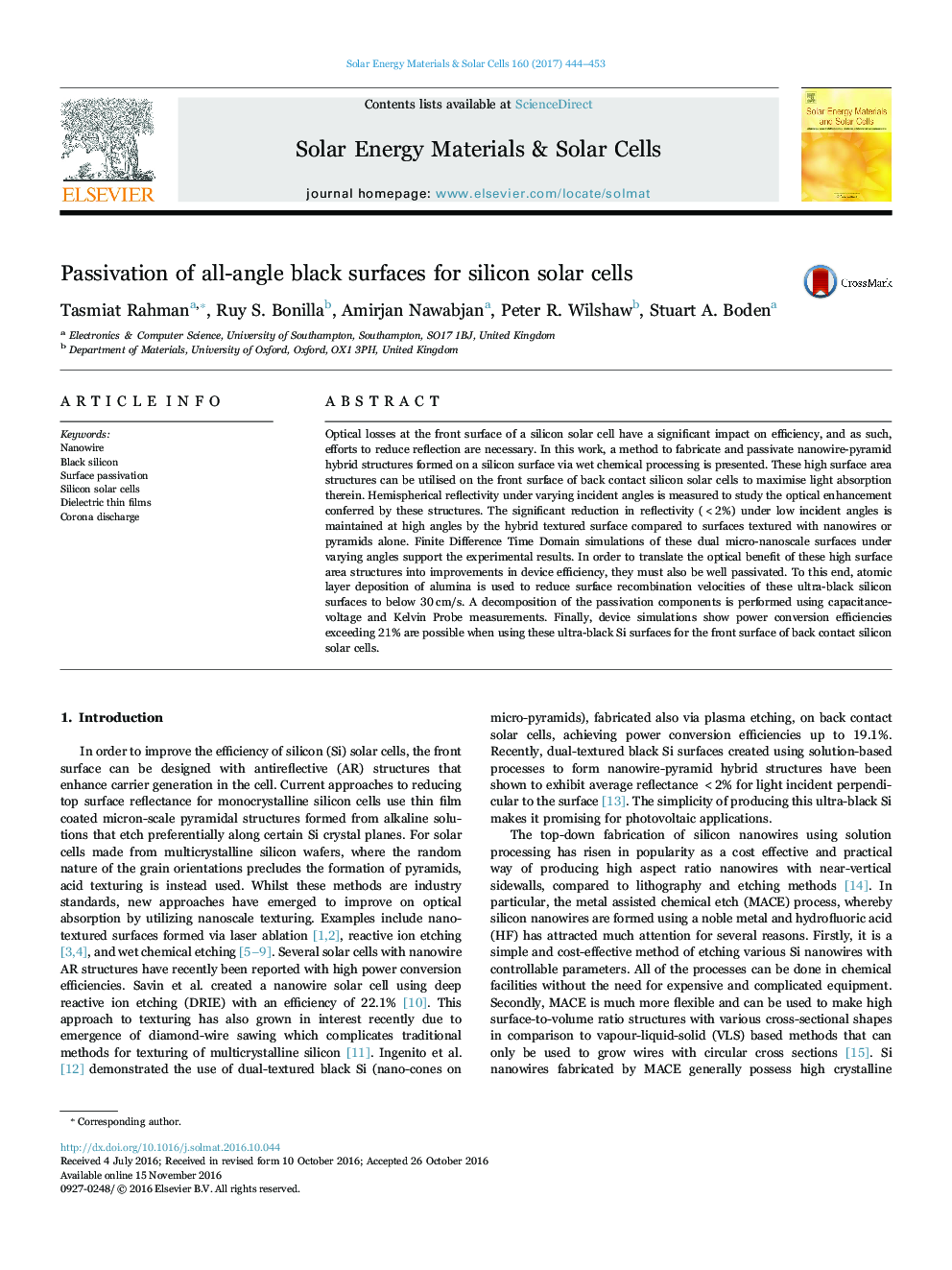| کد مقاله | کد نشریه | سال انتشار | مقاله انگلیسی | نسخه تمام متن |
|---|---|---|---|---|
| 6457390 | 1420663 | 2017 | 10 صفحه PDF | دانلود رایگان |

- Low reflectivity (<2%) across a high angle range by the hybrid textured surface compared to nanowires or pyramids alone.
- Atomic layer deposition of alumina reduces surface recombination velocities of these black silicon surfaces to below 30Â cm/s.
- Device simulations show power conversion efficiencies exceeding 21% are possible when using these black Si surfaces.
Optical losses at the front surface of a silicon solar cell have a significant impact on efficiency, and as such, efforts to reduce reflection are necessary. In this work, a method to fabricate and passivate nanowire-pyramid hybrid structures formed on a silicon surface via wet chemical processing is presented. These high surface area structures can be utilised on the front surface of back contact silicon solar cells to maximise light absorption therein. Hemispherical reflectivity under varying incident angles is measured to study the optical enhancement conferred by these structures. The significant reduction in reflectivity (<2%) under low incident angles is maintained at high angles by the hybrid textured surface compared to surfaces textured with nanowires or pyramids alone. Finite Difference Time Domain simulations of these dual micro-nanoscale surfaces under varying angles support the experimental results. In order to translate the optical benefit of these high surface area structures into improvements in device efficiency, they must also be well passivated. To this end, atomic layer deposition of alumina is used to reduce surface recombination velocities of these ultra-black silicon surfaces to below 30Â cm/s. A decomposition of the passivation components is performed using capacitance-voltage and Kelvin Probe measurements. Finally, device simulations show power conversion efficiencies exceeding 21% are possible when using these ultra-black Si surfaces for the front surface of back contact silicon solar cells.
Journal: Solar Energy Materials and Solar Cells - Volume 160, February 2017, Pages 444-453